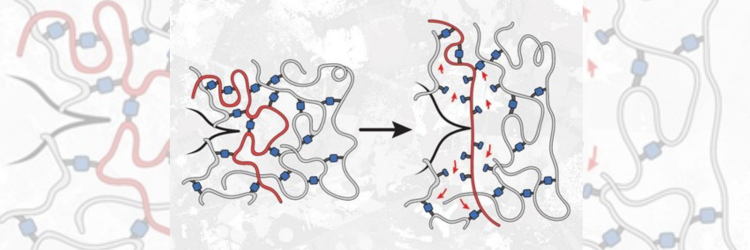Need Strong Polymers? Use Weaker Bonds
MIT and Duke University chemists discovered a novel way to strengthen polymers—throw a few weaker bonds into the material. For polyacrylate elastomers, researchers increased materials’ resistance to tearing by 10x just by using a weaker type of crosslinker to join some of the polymer building blocks. Used in car parts, the polymers are also often used as the “ink” for 3D printing. They are now looking into expanding its use to other materials, including rubber tires, where lifetime could dramatically increase. The work appears in the journal Science.
An advantage of the approach is that it doesn’t alter any of the other physical properties of the polymers.
Polyacrylate elastomers are polymer networks made from acrylate strands held together by linking molecules that can be joined in different ways to create materials with a variety of properties.
An architecture often used is a star polymer network made from two types of building blocks—a star with four identical arms and a chain that acts as a linker. The linkers bind to the end of each of the star’s arms, creating a network like a volleyball net.
In an earlier study, the strength of the polymers was measured, finding that when weaker end-linkers were used to hold the polymer strands together, the material became weaker. The weaker linkers can be broken with much less force than the linkers usually used to join these building blocks. Researchers then investigated a different type of polymer network in which polymer strands are crosslinked to other strands in random locations. They used weaker linkers to join the building blocks, and the material became much more resistant to tearing.
The research showed that polyacrylates incorporating weaker linkers were nine to 10 times harder to tear than polyacrylates made with stronger crosslinking molecules, even when the weak crosslinkers made up only 2 percent of the overall composition of the material.

